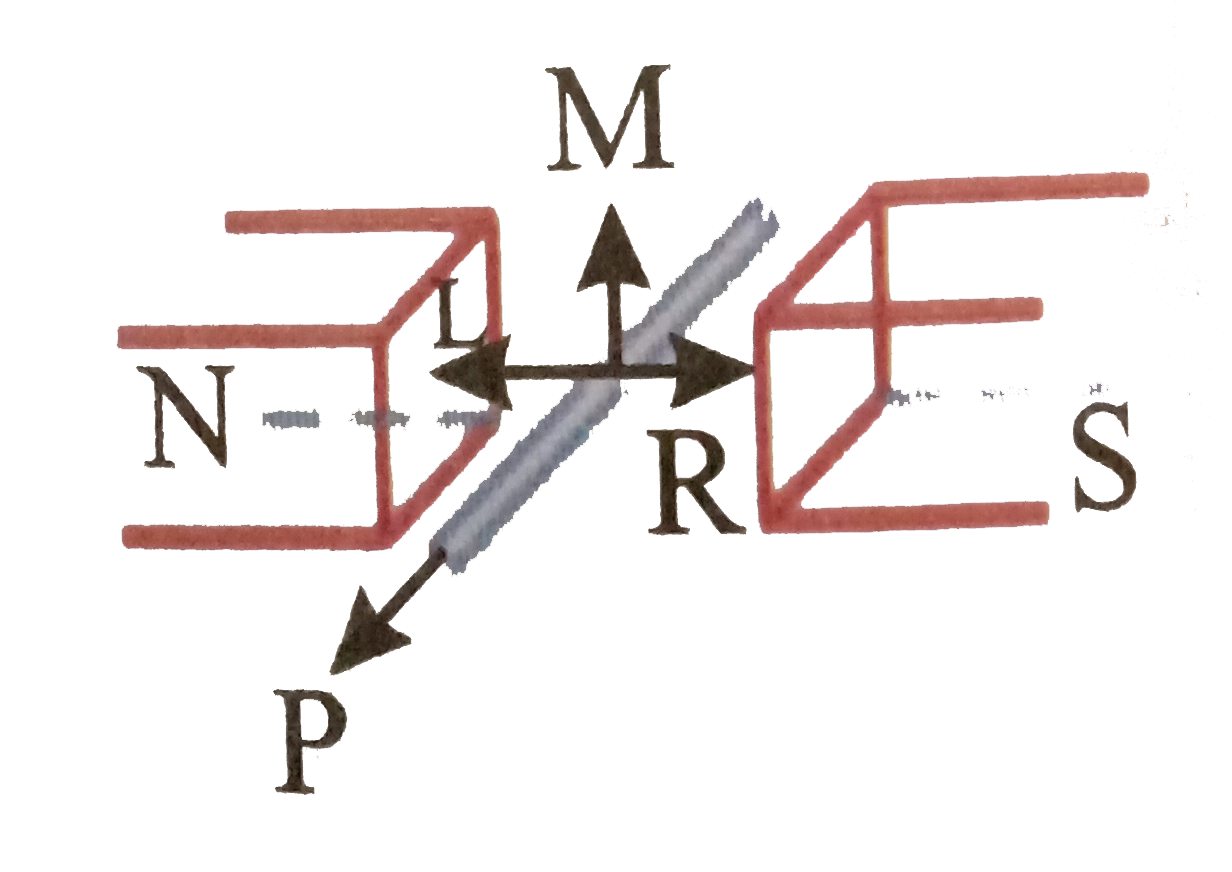An electric potential difference will be induced between the ends of the conductor shown in the diagram when it moves in the direction

P
Q
L
M
The correct Answer is:D
For iduced emf, B , v and l should be mutully perpendicular
Topper's Solved these Questions
Similar Questions
When a potential difference is applied across the ends of a conductor, how is the drift velocity of the electrons related to the relaxation time?
View SolutionA potential difference is applied between the ends of a conductor of uniform radius 2mm. It results in an electric field of strength 250V/m along the length of conductor. Find the resistivity of the material if current in the conductor is 2πA.
View Solution
Knowledge Check
- Question 1 - Select One
An electric potential difference will be incduced between the ends of the conductor shown in the figure, if the conductor moves in the direction shown by
 APBRCLDM
APBRCLDM - Question 2 - Select One
Charge flows between two ends of a conductor when
Aequal and same type of charges are present at the two endsBdifferent electric potentials exist at the two ends of a conductorCthe potential difference between the ends is zeroDsame electric potential is present at the two ends - Question 3 - Select One
When a potential difference is applied across the ends of a linear metallic conductor
AThe free electrons are accelerated continuously from the lower potential end to the higher potential end of the conductorBThe free electrons are accelerated continuously from the higher potential end to the lower potential end of the conductorCThe free electrons acquire a constant drift velocity from the lower potential end to the higher potential end of the conductorDThe free electrons are set in motion from their position of rest
When will the induced current in the electrical conductor (coil) be maximum?
View SolutionMention the condition under which a current can flow in a conductor .
View SolutionDefine potential difference between two points in a conductor.
View SolutionPotential difference between the points P and Q in the electric circuit shown is
 View Solution
View SolutionImagine a conductor through which a current I is flowing and let V be the potential difference between the ends of the conductor. Then, Ohm’s law states that
View Solution

